2022 Week 2: Family Wellness
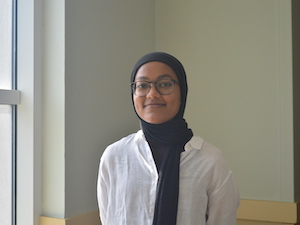 Fatima Elzamzami | Franciscan Center
Fatima Elzamzami | Franciscan Center
During my first week at the Franciscan Center, I shadowed my supervisor, Judy, as she worked with clients to fill out applications for birth certificates, IDs, and social security cards. This week, I worked with clients on my own to complete these applications.
The hardest part about this entire process was figuring out what applications a client was eligible to fill out. To get a Maryland state ID, for example, you must have a social security card and birth certificate. Many of the clients I spoke with did not have either of these, so we had to determine whether they had the documents needed to fill out birth certificates or social security card applications. To fill out an application for a social security card, you need to mail in an original document with your name and date of birth. For many, mailing in their IDs was not an option since it could take weeks for the SSA to mail them back. So, people typically mailed in their medical cards or health records. If a client did not have their medical ID/record, they had to go to their doctor and obtain these before working with us to fill out the application. To file for a birth certificate, you need a valid photo ID. If you do not have this, you can send in two alternative forms of documentation, such as a paystub or utility bill. Getting a birth certificate became even more complicated if the client was born out of state since each state has its own application (and requirements) for obtaining a birth certificate. Because of this, the Center does not assist clients who are born out of state with birth certificates.
It took me a week to understand what you needed to obtain these forms of documentation, and even now, I don’t feel like I have a complete grasp of it. If you are missing all of the documents I mentioned earlier, filing for any of them can get very complicated very quickly. This alone is a huge barrier for many, not to mention the financial barrier for applying for a birth certificate ($12) or an ID ($24). It is nearly impossible to get a job, a home, a car, etc. without a valid form of identification. For something that is so essential, you would think the government would make it easy to obtain them. However, the entire system is incredibly convoluted and complicated, and I cannot imagine having to figure out what you can actually apply for, mail documents, and set up appointments without assistance.
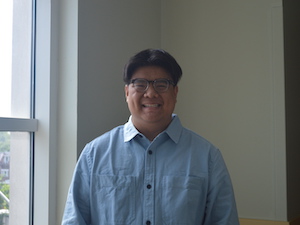 Kobi Khong | Rebuild, Overcome, and Rise (ROAR) Center
Kobi Khong | Rebuild, Overcome, and Rise (ROAR) Center
This week was my first week interacting with community members first-hand and although I’ve had the chance to learn so much from my placement at Rebuild, Overcome, and Rise, and through the CIIP Orientation and our BITES sessions, there is still so much to learn. A challenge that I’ve been facing this past week was coming to terms with my role at my organization and within my community. I’ve been having trouble with feeling as if I’m an imposter, and I think this feeling of just being a tourist in this city we live in is a very common yet damaging aspect within students at our University.
With my placement at UMB ROAR, one of my main tasks is reaching out to past ROAR clients to see methods in which we can improve our services, and all of the people that I’m reaching out to are those who are survivors of crime, and experienced possibly traumatic, life changing events, and in many ways I’ve had trouble feeling capable in the work that I do. There is such a large distance where they have experienced things that I can not comprehend and I’ve always been scared of messing up and doing things wrong when there are real world consequences and I’m interacting with real people.
Stepping out of my comfort zone and coming to an understanding of not only intent but consequence has been an important part of my experiential learning. I am not going to know everything and I can not know everything, but I can operate with an understanding of context and empathy when I work on community outreach and engagement.
All the things that I have learned so far from the Community Impact Internship Program, as well as my co-workers and supervisors at UMB ROAR, are important not only in the work that I continue to do, but also in my growth as a person who lives in our world.
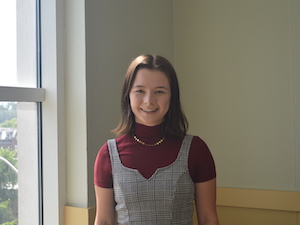 Maddy Kye | Episcopal Refugee & Immigrant Center Alliance
Maddy Kye | Episcopal Refugee & Immigrant Center Alliance
This week, I’ve been struggling with establishing a solid work-life balance. While the desire to start my summer off right carried me through orientation and my first week of my internship, what with creating a workout schedule, cohesive meal prep, and holding myself to a (fairly) strict sleep schedule, this week, I grappled with maintaining the motivation for my hobbies while also attacking each day at my internship sufficiently energized. Furthermore, my routine has proven itself to be difficult to follow consistently, given the diversity in whether I am working in-person or remotely. So far, I’ve worked in-person Monday through Thursday and remotely Fridays. This has been a good balance thus far, but I have found myself unable to schedule my Fridays with the strict structure I impose throughout the rest of the week.
Something else I’ve been thinking about this week, more specific to my placement, is that of motivation. I’ve been working on collecting information for an advocacy page that will ultimately be placed on ERICA’s website; accordingly, I have been looking at immigration policy at the Maryland and federal level. What I have found so far has me feeling disheartened questioning what keeps people in the nonprofit sector/broader realm of advocacy motivated. It’s difficult to fight for change in a country that consistently resists it, and since beginning my research, I have been thinking more every day about what motivates people to continue doing this sort of work and what prevents burnout, when change seems so difficult to promote. While I understand that people feel inspired by working towards this greater good, and that I, too, have felt extremely moved already by what I have learned, I am curious to learn from others in the nonprofit sector as to how they keep themselves from losing hope.
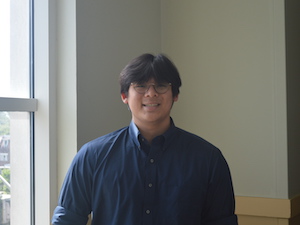 Jonathan Lee | Court Appointed Special Advocates (CASA) for Children of Baltimore
Jonathan Lee | Court Appointed Special Advocates (CASA) for Children of Baltimore
After spending my first week learning about the intricacies behind foster care, I took some time to reflect on what I wanted to accomplish this summer with CASA Baltimore. The many health inequities, such as homelessness, substance abuse, and domestic violence, that youth leaving foster care experience is a public health crisis that isn’t covered in the media. I was shocked to learn about many of these health outcomes and was disheartened that a lot of youth aren’t given the support they need.
Many case workers in the juvenile court system are overworked and underpaid. As a result, many cases fall through the cracks and aren’t provided the resources that they deserve. Non-profit organizations who work alongside the juvenile court, such as CASA, are then tasked with filling the gaps that currently exist. To me, it’s interesting that government programs, which should have adequate financial support, are often underfunded. During our Bites session for this week, we covered the Baltimore City Public schools. Only 2% of our national budget goes towards education. 2%! That makes no sense to me. Because a lot of these students don’t get enough support while in school, there are a lot of additional non-profit education programs such as MERIT, Code in Schools, Yo! Baltimore, and much more. I believe that nonprofits should supplement standard education rather than filling in the gaps.
In the coming weeks, I’m excited to continue developing a resource guide for volunteers and youth in CASA. Since foster care ends at 21 years old, I want to create something that would prepare them for early adulthood. As a 20 year old myself, I spend a lot of time thinking about food, transportation, housing, finances, and education. In this resource guide, I want to provide a mix of Baltimore City resources and helpful infographics such as how to open a Roth IRA, apply for SNAP, and write a resume. I’m excited for the rest of summer!
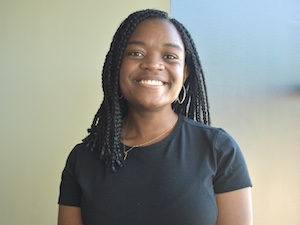 Koye Oputa | BCPS Special Education
Koye Oputa | BCPS Special Education
It was hard catching the Purple Line on a sunny day for an 8-minute ride.
It was hard catching the Purple Line on a rainy day for what amounted to no ride.
It was hard catching the second bus of my commute when the first one was late.
It was hard catching the second bus of my commute when not one, but two Pink Lines sped right past me due to being overpacked (and late).
I spent a lot of money on Lyfts trying to make it to work on time this week.
Mass transit becomes far more difficult when anything is more than one bus ride away, especially when your destination shifts out of the White L and into the Black Butterfly.
A day into my internship, my supervisor informed me that I would be working at school sites that would have me waiting on risky street corners at 6 AM. She made it clear that mass transit was not a safe nor sustainable way to continue my internship. Thankfully, with the help of some kind coworkers and a little planning, we were able to figure out some alternatives for me.
Still, I was further struck by the misfortune of Baltimore’s unreliable mass transit system during this week’s CIIP presentation on Food Justice and Sovereignty, which emphasized that lack of access to reliable transportation isn’t just an issue of commuting to work, but an issue of access to healthy food for those who live in areas affected by food apartheid, which becomes an issue of personal and public health.
I marvel at this city’s inequitable land and transportation design that makes it so difficult for a person to attain sustainable access to education, work, healthy food, and more. I marvel even more at how many times I’ve heard some variation of “People just need to work harder if they want to be happy/healthy/achieve xyz,” this week alone.
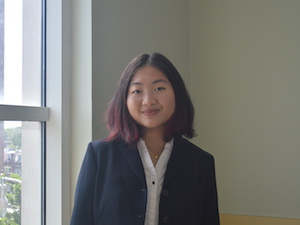 Estelle Yeung | Baltimore Harm Reduction Coalition
Estelle Yeung | Baltimore Harm Reduction Coalition
My work at BHRC thus far has been entirely in-person, which I’ve really enjoyed. Throughout the pandemic, my classes, extracurriculars, and work have been largely virtual; I’ve found that monotony to be tiring and sometimes isolating. I was really glad to find out a few months ago that I’d be working somewhat in-person at BHRC.
This is the first time that I’ve lived in a larger city with public transportation, so learning to navigate the bus routes in Baltimore in order to reach my placement has been interesting. BHRC is the only organization that operates in our building, so I have to buzz in and be let into the building by a staff member each morning. I usually plan to take a bus earlier than the last possible one to make it to BHRC on time, since there are usually delays. There have been times during these past two weeks where I’ve arrived earlier than my coworkers because my bus arrived at my stop a bit earlier. Contrarily, there have been times that the bus is late or doesn’t show up altogether, so I either wait for the next one or walk back home.
However, I’ve appreciated the convenience of free public transportation via the Circulator’s purple line, especially since the Transit app tracks the exact location of the buses. I’m also fortunate that my placement is within walking distance of campus, so if the timing of the buses doesn’t work out for me, I can walk instead.
Adjusting to an in-person work environment has been a drastic shift from the past two years of entirely remote work, but I’m embracing my schedule and enjoying the consistency it brings. Having in-person meetings to work on projects has been a refreshing chance to get to know my coworkers at the office, while working 9-5 each day has allowed me to settle into a daily routine.
